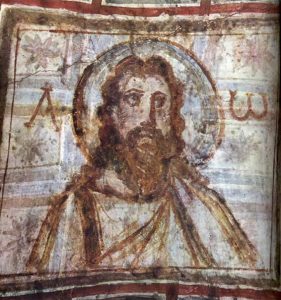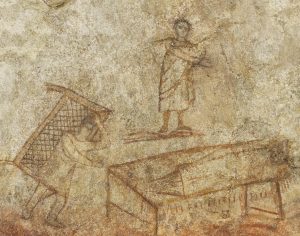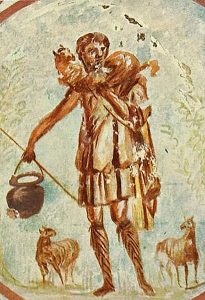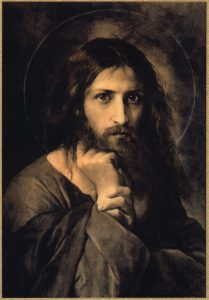 Question: A man who told me that Jesus’ image is based on that of Cesare Borgia. The problem with that statement is that Cesare Borgia lived in 15th century Italy. Thoughts?
Question: A man who told me that Jesus’ image is based on that of Cesare Borgia. The problem with that statement is that Cesare Borgia lived in 15th century Italy. Thoughts?
The claim that Jesus’ image is based on Cesare Borgia is historically and factually flawed. The notion that depictions of Jesus are modelled after Cesare Borgia (1475–1507), the son of Pope Alexander VI, originates from a combination of anti-Catholic rhetoric, Renaissance conspiracy theories, and later pseudo-historical narratives—especially popularised in fringe circles and some modern polemical media. It has no grounding in actual art history, theology, or reputable historical documentation. If the person who told you that is a theologian, then his credentials ought to be called into question.
Images of our Lord Jesus Christ existed many centuries before Cesare Borgia’s birth. One prominent example is the Dura-Europos fresco, dated to around 235 AD, found in Syria. This early Christian artwork depicts Christ healing the paralytic. The Alexamenos graffito, dated roughly to the late 2nd or early 3rd century, though mocking, indicates an established image of Christ. The Christ Pantocrator icon from St. Catherine’s Monastery in Sinai, dating to the 6th century, already shows Christ with features we associate with later iconography, for example, long hair, beard, and a solemn expression. Thus, Christian imagery of Jesus predates the Renaissance by over a thousand years.
 Byzantine, Syriac, Coptic, and Armenian traditions already had well-established depictions of Christ centuries before the Renaissance. These were rooted in theological and symbolic aesthetics rather than realistic portraiture.
Byzantine, Syriac, Coptic, and Armenian traditions already had well-established depictions of Christ centuries before the Renaissance. These were rooted in theological and symbolic aesthetics rather than realistic portraiture.
The Mandylion of Edessa, Veronica’s Veil, and the Shroud of Turin—all regarded by various traditions as bearing miraculous images of Christ—also influenced early portrayals long before Cesare Borgia’s lifetime.
The myth seems to have originated or gained traction through Rodrigo Borgia’s papacy (Alexander VI) and the perception of Borgia decadence and corruption. Some claim that the pope had artists such as Leonardo da Vinci or others use Cesare Borgia’s face as a model for Jesus in commissioned works. There is no historical or artistic documentation supporting this.
 The theory gained further traction in anti-Catholic and anti-European colonial narratives. More recently, it was amplified in the 20th and 21st centuries by media (such as certain pseudohistorical documentaries and the Black Hebrew Israelite movement), not academic scholarship. Many uneducated people today are more likely to believe a meme on social media than to glance at ancient history.
The theory gained further traction in anti-Catholic and anti-European colonial narratives. More recently, it was amplified in the 20th and 21st centuries by media (such as certain pseudohistorical documentaries and the Black Hebrew Israelite movement), not academic scholarship. Many uneducated people today are more likely to believe a meme on social media than to glance at ancient history.
As a side note, the Orthodox Church maintains that icons are not painted to reflect exact physical likenesses but to represent spiritual truth. Iconographers follow strict canonical forms. The depictions of Christ are traditionally based on symbolic representations, theological reflection, and continuity with early Christian artistic conventions—not on any one earthly model.
The claim that Jesus’ image is based on Cesare Borgia is not supported by any credible historical, theological, or artistic evidence. It contradicts archaeological findings, art historical records, and the established evolution of Christian iconography over nearly two millennia. It is an internet-era myth at best, and a deliberate distortion at worst.
One of the earliest known visual depictions of Christ predates the Renaissance by over 1,200 years. Anyone with two pennies worth of common sense should reject the Cesare Borgia theory as historically untenable.

Comments are closed.